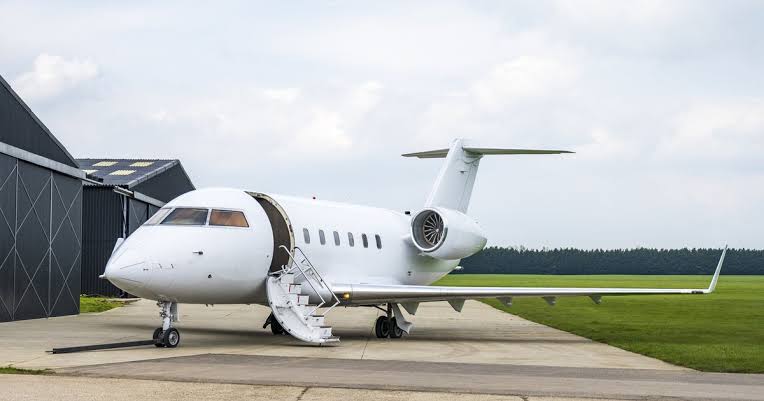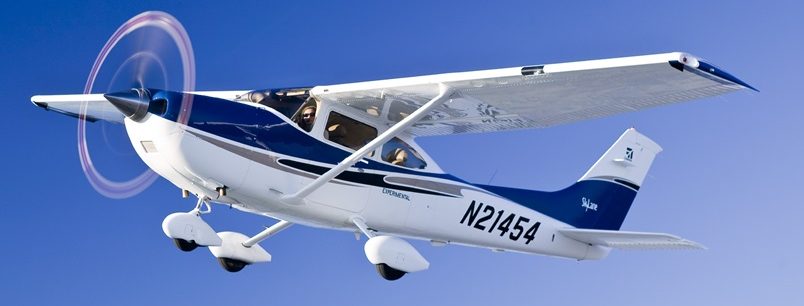The Future of Private Jet Airports: Infrastructure Developments for 2025 and Beyond
Welcome to a fascinating exploration into the future of private jet airports, a dynamic trajectory that looks set to revolutionize the landscape of private aviation as we know it. As we travel further into 2025 and beyond, we’ll delve into the surge of infrastructure improvements, transformative technologies such as smart airport systems, biometric security, renewable energy integration, and the ever-expanding roster of facilities tailor-made for the deluxe airborne escapade. This shaping up of private jet airports is not merely a luxurious endeavor; it echoes an increasingly important marker in global business aviation. Prepare for a luxury ride as we embark on an exciting journey into an opulent new era for private jet airports.
Current State of Private Jet Airports
 The world of private jet airports is an impressive landscape, marked by luxurious facilities and cutting-edge technology that offer an elite travel experience for high-fliers. At present, these facilities are scattered globally, with a high concentration in affluent regions.
The world of private jet airports is an impressive landscape, marked by luxurious facilities and cutting-edge technology that offer an elite travel experience for high-fliers. At present, these facilities are scattered globally, with a high concentration in affluent regions.
Overview of Existing Facilities
 In the current scenario, private jet airports are a mix of standalone facilities and dedicated terminals in larger commercial airports. They are designed to offer an exclusive environment for high-net-worth individuals, redefining the norms of traditional air travel. These facilities boast lavish lounges, exciting culinary options, and premier concierge services. High-profile passengers also have the advantage of private boarding areas, eliminating the inconveniences related to long security lines and delayed flights.
In the current scenario, private jet airports are a mix of standalone facilities and dedicated terminals in larger commercial airports. They are designed to offer an exclusive environment for high-net-worth individuals, redefining the norms of traditional air travel. These facilities boast lavish lounges, exciting culinary options, and premier concierge services. High-profile passengers also have the advantage of private boarding areas, eliminating the inconveniences related to long security lines and delayed flights.
Major players in the industry, such as Signature Flight Support or FBOs (Fixed-Base Operators), operate many of these elite facilities. They offer a myriad of services including hangaring, fueling, maintenance, charter services, and more. Although distinctly designed, these facilities follow international guidelines, ensuring the safety and comfort of their prestigious clients.
Major hubs include Teterboro Airport in New Jersey, McCarran International Airport in Las Vegas, and Luton Airport in London. These airports have seen a surge in private jet activity due to the location advantages they offer.
Challenges Faced by Private Jet Operators
 Despite the allure, private jet operators face a series of dilemmas. The current private jet industry is grappled with issues related to infrastructure, regulatory policies, and global economic fluctuations.
Despite the allure, private jet operators face a series of dilemmas. The current private jet industry is grappled with issues related to infrastructure, regulatory policies, and global economic fluctuations.
At an infrastructure level, there is a constant demand for airport modernization and addition of new convenient facilities. As the number of private jet operators increases, the lack of available hangar spaces becomes a pressing issue. This results in difficulty in expanding operations and accommodating new aircrafts.
Regulatory policies also pose a significant challenge. The private jet industry is closely monitored by various regulatory authorities, such as the Federal Aviation Administration (FAA) in the United States, to ensure safety and environmental compliance. Conforming to these constantly evolving regulations calls for continual adjustments that can be costly and time-consuming for operators.
Lastly, the global economic situation can significantly impact the industry. High-net-worth individuals who form the clientele base of this industry are susceptible to such fluctuations. Economic downturns can lead to reduced activity, leading to losses for operators.
Despite challenges, the private jet airport domain sequentially gears up to match the rising consumer expectation and enhanced technological incorporation. The market evolves relentlessly, bound to reach new heights in the impending years. This era of private air travel is already about much more than just getting from one point to another; it’s about the entire journey experience.
Technological Advancements in Airport Infrastructure
 As the demand for private aviation increases, so does the need for modern, efficient, and highly technical infrastructure. The following sections review emerging technologies that are becoming integral features for private jet airports.
As the demand for private aviation increases, so does the need for modern, efficient, and highly technical infrastructure. The following sections review emerging technologies that are becoming integral features for private jet airports.
Smart Airport Systems
The introduction of Smart Airport Systems is a game-changer in managing high volumes of private aircraft traffic. These advanced systems employ artificial intelligence (AI), Internet of Things (IoT), and big data analytics to optimize routines such as real-time flight tracking, instant updates on arrival and departure schedules, and predictive maintenance.
IoT sensors installed throughout airport facilities allow automated data collection, ensuring operations run smoothly and efficiently. AI algorithms use this data to optimize decision-making processes, improving turn-around times and reducing delays. Real-time data analytics enables quick responses to any unexpected situations, providing a secure and efficient environment for both operators and passengers.
Biometric Security Measures
Security is paramount in private aviation, and biometric authentication is playing a significant role in enhancing it. High-tech biometric security measures, such as facial recognition and fingerprint scanning, speed up passenger authentication processes while adding an extra layer of security. Besides providing quick and seamless access to boarding gates, these measures also significantly reduce the risk of identity theft – a vital consideration in an elite and private sector such as business aviation.
Automated Ground Handling Equipment
No longer solely the domain of commercial airports, automated ground handling equipment is making its presence felt in private jet airports too. Automated equipment simplifies various time-consuming manual tasks, from cargo handling to aircraft maintenance.
Robotics, in particular, has come to the forefront of this automation shift. Robots are used to perform tasks like baggage loading, de-icing of aircraft, and even plane towing. Presented with the advantage of operating in varied weather conditions, these automated systems significantly reduce aircraft downtime, improving the overall efficiency of airport operations.
These technological improvements are redefining the way airports function and are revolutionizing the private aviation industry. With these advancements, private jet airports can offer their customers a higher level of service and security while staying competitive in the aspirational world of luxury and convenience. The future of private aviation lies with technology – ensuring airports are as smart, secure, and efficient as the aircraft they cater to.
Sustainable Practices in Private Jet Airport Design
 The future of private jet airport infrastructure will be significantly influenced by ongoing sustainability initiatives. As this industry continues to grow, environmental concerns have become a central focus for airport designers and operators. From green building initiatives to renewable energy integration and effective waste management measures, the sustainable practices implemented now will shape private aviation for years to come.
The future of private jet airport infrastructure will be significantly influenced by ongoing sustainability initiatives. As this industry continues to grow, environmental concerns have become a central focus for airport designers and operators. From green building initiatives to renewable energy integration and effective waste management measures, the sustainable practices implemented now will shape private aviation for years to come.
Green Building Initiatives
Green building initiatives are one of the most noticeable aspects of sustainable airport design. Many airports are now pursuing certifications such as LEED (Leadership in Energy and Environmental Design) which focus on energy efficiency, water use, indoor air quality, and material selection. Features like natural lighting, green roofs, and recycled building materials not only reduce an airport’s environmental impact, but also create a healthier and more appealing atmosphere for passengers and staff alike.
Such revolutionary architectural designs play a significant role in reducing carbon emissions, as buildings are responsible for almost 40% of global CO2 emissions. Moreover, green buildings enhance the overall experience for high-net-worth individuals who value a luxurious yet responsible lifestyle.
Renewable Energy Integration
 Another key sustainable practice in airport infrastructure development is the integration of renewable energy. This can be realized through solar panels on terminal roofs, wind turbines on airport grounds, or even geothermal heating and cooling systems. These renewable energy sources reduce the reliance on fossil fuels, substantially cutting down on greenhouse gas emissions.
Another key sustainable practice in airport infrastructure development is the integration of renewable energy. This can be realized through solar panels on terminal roofs, wind turbines on airport grounds, or even geothermal heating and cooling systems. These renewable energy sources reduce the reliance on fossil fuels, substantially cutting down on greenhouse gas emissions.
For instance, Cochin International Airport in India became the world’s first fully solar-powered airport in 2015, setting a pioneering example for future private jet airports. Such ventures not only position airports as environmental stewards but also pave the way for significant long-term cost savings.
Waste Management Solutions
 Finally, implementing effective waste management solutions is imperative to the sustainable development of private jet airports. This involves recycling programs, composting food waste from vendors and passengers, and limiting single-use plastic within terminals.
Finally, implementing effective waste management solutions is imperative to the sustainable development of private jet airports. This involves recycling programs, composting food waste from vendors and passengers, and limiting single-use plastic within terminals.
In addition, airports can employ advanced waste-to-energy systems, which convert non-recyclable waste into heat, electricity, or fuel. This not only reduces landfill waste but also contributes to an airport’s energy supply, further enhancing its sustainability profile.
Modern waste management technologies also contribute to a cleaner and more pleasant airport environment, directly benefiting the passenger experience of those flying via private jet.
In summary, as air travel continues to expand, the sustainable practices applied in airport design will have far-reaching implications for the industry. As we journey towards 2035 and beyond, private aviation must take a lead role in driving these sustainable changes, ultimately revolutionizing the way we experience luxury air travel.
Enhanced Passenger Experience
 Beyond the advancements in technology and sustainability, private jet airports are making strides in delivering an unparalleled passenger experience. This development is informed by the fact that the industry caters mainly to high-net-worth individuals who value efficiency, luxury, and personalized services.
Beyond the advancements in technology and sustainability, private jet airports are making strides in delivering an unparalleled passenger experience. This development is informed by the fact that the industry caters mainly to high-net-worth individuals who value efficiency, luxury, and personalized services.
Luxury Lounges and Amenities
In the race to providing the ultimate comfort to passengers, private jet airports are increasingly boasting luxury lounges that offer a resort-like experience. These lounges feature amenities such as fine dining options, quiet work areas, high-end relaxation spaces, private meeting rooms, and exclusive spa services. Companies like NetJets and Signature Flight Support are heavily invested in creating premium, personalized spaces that cater to the sophisticated taste of their clientele.
Streamlined Check-in and Boarding Processes
 Private jet travel promises efficiency and convenience in which the check-in and boarding processes play a significant role. To this end, airports are seeking to enact quick and hassle-free procedures, eliminating the time typically wasted in commercial terminals. Passengers can arrive just minutes before their scheduled departure, undergo a swift, discrete security check, and board immediately. Technologies such as biometrics are also finding their place in this sector, further speeding up the process while ensuring robust security.
Private jet travel promises efficiency and convenience in which the check-in and boarding processes play a significant role. To this end, airports are seeking to enact quick and hassle-free procedures, eliminating the time typically wasted in commercial terminals. Passengers can arrive just minutes before their scheduled departure, undergo a swift, discrete security check, and board immediately. Technologies such as biometrics are also finding their place in this sector, further speeding up the process while ensuring robust security.
Personalized Services for High-Net-Worth Individuals
One of the hallmarks of private jet travel is the personalized service offered to passengers. Not only do they enjoy tailored in-flight services, but their entire journey is customized according to personal preferences and needs. From providing preferred food and beverages to arranging ground transportation, private jet operators and terminal staff go the extra mile to ensure a seamless and enjoyable travel experience. These concierge services also extend to fulfilling special requests like event bookings or securing hard-to-get reservations, further elevating the passenger experience.
As we move towards the future, the bar for passenger experience at private jet airports will continue to rise. Thus, service providers in this arena will consistently have to innovate and focus on delivering high-quality, personalized experiences to stay ahead in this competitive market.
Improved Air Traffic Management
 Progressing beyond advancements in the physical infrastructure of private jet airports, we journey into the realm of air traffic management – where the integration of technology and careful planning ensures smooth operations for flights.
Progressing beyond advancements in the physical infrastructure of private jet airports, we journey into the realm of air traffic management – where the integration of technology and careful planning ensures smooth operations for flights.
Next-generation Air Traffic Control Systems
Today’s air traffic control systems are undergoing an innovation overhaul, with the next-generation air traffic control systems leading the charge. These systems are designed to be more efficient, adaptable, and capable of accommodating the growing number of private flights without jeopardizing safety.
Implanting artificial intelligence and machine learning into these systems is one such innovation. Machine learning algorithms can sift through historical flight data, weather reports, and other available information to predict possible issues before they arise and suggest optimized flight paths.
Moreover, these systems are designed to incorporate data from unmanned aerial vehicles (drones) and, possibly, future air taxis, ensuring private jet airports are ready to adapt to forthcoming trends in aviation technology. This digital advancement will not only enhance operational precision but also expedite response times, ensuring passenger safety is never compromised.
Reduced Congestion and Delays
The adoption of advanced air traffic control systems promises considerably reduced congestion and delays. With the continuous rise in the number of private jet movements, well-regulated traffic is paramount. Currently, innovative software systems are helping air traffic controllers better manage and streamline the flow of aircraft, thereby minimizing delays and maximizing operational efficiency.
Real-time data enables air traffic managers to make better-informed decisions. This information reduces the likelihood of congestion and improves overall coordination among different flights. Transitioning from ground-based to satellite-based systems will bolster this further, allowing for more accurate tracking and better utilization of airspace.
 Integration with Commercial Air Traffic
Integration with Commercial Air Traffic
The integration with commercial air traffic will also undergo significant improvement. Private jets traditionally face scheduling constraints due to the domination of commercial airlines over air traffic management. However, the future will see private jet airports better integrated with commercial air traffic, thanks to advanced traffic management systems.
New protocols are already under development, allowing private jets to seamlessly blend with commercial flight schedules, sharing airspace, and runways without causing delays or disruptions. These integrations will result in more efficient and cost-effective operations for private jet companies, encouraging industry growth while also improving passenger experience.
Expansion of Private Jet Terminals
As part of the constantly evolving panorama of the aviation industry, it’s worth noting the rise of exclusive terminals dedicated solely to private jets. The establishment of these terminals signifies the industry’s acknowledgment of the increasing demand for private jet travel. Expansion in this sphere aligns with the need for flexibility, efficiency, and premium services sought by high-net-worth individuals (HNWI) and corporations.
New Dedicated Facilities at Major Airports
Major airports worldwide are beginning to implement dedicated facilities for private jets, thus catering exclusively to HNWI and corporate clients. Airports such as Los Angeles International Airport (LAX) in the United States and London Heathrow Airport in the UK have either already introduced private terminals or are in the process of constructing them.
These dedicated facilities promote operational efficiency for private jet operators and offer an enhanced passenger experience for clients. LAX’s private suite, for instance, enables passengers to bypass the regular airport hustle, providing luxury lounges, direct tarmac access, and expedited security and passport control processes.
Repurposing of Underutilized Airport Spaces
 Another key strategy in the expansion of private jet terminals involves the creative repurposing of underutilized airport spaces. Numerous airports have unused or underutilized terminals, hangers, or patches of land that can be transformed into private jet terminals.
Another key strategy in the expansion of private jet terminals involves the creative repurposing of underutilized airport spaces. Numerous airports have unused or underutilized terminals, hangers, or patches of land that can be transformed into private jet terminals.
This approach not only bolsters the airport’s infrastructure but also generates an additional revenue stream while meeting the growing demand for private aviation. Bournemouth Airport in England, for instance, repurposed an underused terminal into a state-of-the-art facility for private jet customers, featuring luxury lounges, meeting rooms, and a dedicated security area.
Development of Satellite Private Jet Airports
Development of satellite private jet airports is another innovative solution towards coping with increasing demand. These are standalone facilities built away from the larger, busy commercial airports, dedicated solely to private jet operations.
Satellite airports provide an exceptional level of privacy and convenience, often with fewer flight restrictions and quicker departure times. The introduction of these facilities, such as London’s Oxford Airport and New Jersey’s Teterboro Airport, is fundamentally changing the landscape of private aviation, pushing the boundaries of luxury air travel to unprecedented heights.
In conclusion, the expansion of private jet terminals is a promising development toward meeting the ever-growing needs of private jet enthusiasts. Whether it’s about establishing new facilities, maximizing the utilization of existing spaces, or creating satellite private jet airports, these advancements symbolize a significant leap in the progression of the private aviation industry.
Advancements in Runway Technology
All-weather Operations Capabilities
 The future of private jet airports allows for remarkable advancements in runway technology, starting with all-weather operations capabilities. Advancements such as heated runways and predictive runway conditions indicating systems have expanded the possibilities for aircraft, reducing the impact of adverse weather events. These cutting-edge technologies utilize ground heating systems and advanced sensors to keep runways ice-free during winter months and forecast potential hazards in real-time. As a result, private jet operators can ensure more reliable and on-time operations, regardless of the weather conditions.
The future of private jet airports allows for remarkable advancements in runway technology, starting with all-weather operations capabilities. Advancements such as heated runways and predictive runway conditions indicating systems have expanded the possibilities for aircraft, reducing the impact of adverse weather events. These cutting-edge technologies utilize ground heating systems and advanced sensors to keep runways ice-free during winter months and forecast potential hazards in real-time. As a result, private jet operators can ensure more reliable and on-time operations, regardless of the weather conditions.
Noise Reduction Measures
One of the most significant issues that contemporary airports face is noise pollution. As airport locations continue to be engulfed by urban development, it becomes increasingly paramount to address and mitigate the effects of aircraft noise on surrounding communities. To this end, several measures have been implemented. Utilizing sophisticated noise abatement procedures, the use of “quiet” technology and advancements in airplane design have all contributed to noise reduction. Engineers are also exploring quieter landing gear, noise-absorbing paint, and more aerodynamic structures. These advancements benefit both the immediate airport environment and its broader community while enhancing the appeal of private jet travel as a quieter means of transport.
Improved Surface Materials for Longevity
 Private jet airports of the future are now investing heavily in durable, high-performing, and more resilient runway surfaces. Traditional asphalt, for instance, is being replaced with carbon-neutral alternatives that lower emissions. These innovations extend to the use of recycled materials and smart technologies such as self-healing concrete which repairs itself after damage, thus increasing the runway’s lifespan. By utilizing these advanced materials, airports can reduce maintenance costs, prolong runway longevity, and ensure the safety and efficiency of operations.
Private jet airports of the future are now investing heavily in durable, high-performing, and more resilient runway surfaces. Traditional asphalt, for instance, is being replaced with carbon-neutral alternatives that lower emissions. These innovations extend to the use of recycled materials and smart technologies such as self-healing concrete which repairs itself after damage, thus increasing the runway’s lifespan. By utilizing these advanced materials, airports can reduce maintenance costs, prolong runway longevity, and ensure the safety and efficiency of operations.
Through meticulous efforts to optimize all-weather operations, minimize noise pollution, and implement resilient surface materials, private jet airports are set to offer a vastly superior experience, both for those in the cabin and those living in the surrounding communities.
Integration of Urban Air Mobility
The integration of urban air mobility (UAM) is a game-changer for the private aviation industry. As we usher in 2025 and beyond, expect these transformations to continue shaping the evolution of private jet airports.
Vertiports for eVTOL Aircraft
 One of the pioneering technologies underpinning the integration of urban air mobility is the emergence of eVTOL (Electric Vertical Takeoff and Landing) aircraft. The beauty of eVTOL aircraft lies in their ability to take off and land vertically, mirroring the functionality of helicopters while offering the speed, efficiency, and eco-friendliness of electric motor technology.
One of the pioneering technologies underpinning the integration of urban air mobility is the emergence of eVTOL (Electric Vertical Takeoff and Landing) aircraft. The beauty of eVTOL aircraft lies in their ability to take off and land vertically, mirroring the functionality of helicopters while offering the speed, efficiency, and eco-friendliness of electric motor technology.
To accommodate these cutting-edge aircraft, private jet airports are evolving their infrastructure to include ‘vertiports’ – specialized terminals designed for safe and efficient eVTOL operations. Companies such as Uber Elevate are already leading the way in designing premier vertiports that offer fast passenger turnover, low noise pollution, and minimal impact on the surrounding urban environment.
Seamless Connections with Ground Transportation
Another significant facet inhering in the integration of urban air mobility is the harmonization between the skies and the ground. With a growth in demand for door-to-door services, private jet airports are weaving in seamless connections with ground transportation alternatives.
Arriving passengers can expect to find ‘mobility-as-a-service’ (MaaS) options readily available upon landing. These solutions may include luxury electric vehicles, autonomous shuttles, or even hyperloop stations to expedite their final leg of the journey. This seamless blend of air and ground travel will not only enhance the passenger experience but also maximize operational efficiency.
Regulatory Challenges and Solutions
While the integration of urban air mobility is teeming with potential, it’s equally fraught with regulatory challenges. The safety and logistical concerns of operating eVTOLs within crowded urban spaces pose significant issues that must be addressed proactively.
Key industry players and regulatory bodies like the FAA (Federal Aviation Administration) are collaborating to establish new rules and standards for these burgeoning technologies. Efforts are underway to devise reliable automated traffic management systems, comprehensive operator training protocols, and stringent testing procedures. By tackling regulatory challenges head-on, the private jet airport of the future will secure a safer, more efficient environment for private aviation, maintaining, if not elevating, the industry’s commitment to excellence.
Future-Proofing for New Aircraft Types
The rapid pace of technology advances is pushing the boundaries of what’s possible in aviation. To ensure the relevancy of private jet airports in the future landscape of air travel, they need to future-proof their infrastructure to accommodate new types of aircraft.
Accommodating Supersonic Business Jets
The return of supersonic travel, but this time in the business aviation sector, is no longer a notion of the past. Companies like Boom Supersonic and Aerion Supersonic aim to significantly reduce intercontinental travel time with their supersonic business jets. Boom’s Overture, for instance, is predicted to double the speed of conventional aircraft, shrinking a 7-hour New York to London flight to just over 3 hours. However, these ultra-fast jets will have special requirements, including runways that can handle higher speed takeoffs and landings, and reinforced hangars for maintenance. Adapting to these needs will help private jet airports attract supersonic jet operators and their high-value clientele.
Facilities for Hydrogen-Powered Aircraft
Amid growing environmental concerns, aviation is looking towards clean energy sources, with hydrogen emerging as a promising option. Hydrogen-powered aircraft are emission-free, with water being the only by-product of combustion. Moreover, with energy densities three times greater than jet fuel, hydrogen can potentially revolutionize long-haul flights. But accommodating these innovative planes will require airports to invest in hydrogen fueling infrastructure and safety training. Hydrogen storage facilities will need to adhere to stringent safety standards, and ground crew will need training in handling this new fuel type.
Flexibility for Emerging Aviation Technologies
The rise of electric vertical take-off and landing (eVTOL) aircraft, autonomous drones, and other new aviation technologies are set to transform the way we travel. Exciting as these developments are, they will also pose significant challenges for airport infrastructure, including the need for vertical launch pads, electric charging facilities, and airspace management systems that can handle autonomous operations. By planning for these technologies now, private jet airports can ensure they are not left on the tarmac as the future of aviation takes off.
Building the infrastructure to accommodate these new types of aircraft will be a complex and costly endeavor. However, it will also open up golden opportunities to attract new customers, foster innovation, and establish a strong footing in the future of private aviation.
Investment and Economic Impact
Private Sector Funding for Airport Improvements
 Investments in private jet airports aren’t just luxuries; they are now becoming business necessities. In an era where time is the new currency, the private sector recognizes the importance of efficient and luxurious air travel. Many high-net-worth individuals, corporations, and private equity firms are injecting capital in airport infrastructural upgrades. They’re funding advanced navigation systems, additional runways, and expanding terminal buildings with superior amenities. This private sector investment is driving the transformation of private jet airports into state-of-the-art facilities, making them capable of serving the next generation of business travel.
Investments in private jet airports aren’t just luxuries; they are now becoming business necessities. In an era where time is the new currency, the private sector recognizes the importance of efficient and luxurious air travel. Many high-net-worth individuals, corporations, and private equity firms are injecting capital in airport infrastructural upgrades. They’re funding advanced navigation systems, additional runways, and expanding terminal buildings with superior amenities. This private sector investment is driving the transformation of private jet airports into state-of-the-art facilities, making them capable of serving the next generation of business travel.
Government Initiatives Supporting Infrastructure Development
On another front, governments worldwide are also understanding the value of private aviation to their economies. Numerous initiatives are underway to support infrastructure development at private jet airports. Governments are assisting in the form of grants, tax incentives, and streamlined approval processes for expansion efforts. They’re betting that the boost to the local economy, through job creation and increased business travel, will outweigh the upfront costs.
For instance, initiatives like the Airport Improvement Program (AIP) in the United States provides grants for public-use airports to enhance their infrastructure. Similar initiatives are ongoing in Europe, Asia, and the Middle East to facilitate the growth of private aviation.
Economic Benefits for Local Communities
The benefits of investment in private jet airports extend beyond the travelers and businesses. Local communities also stand to gain. Job creation is one of the immediate benefits, with roles spanning from construction to airport operations to ancillary businesses like hotels and restaurants.
Moreover, the presence of a well-facilitated private jet airport can attract more businesses to the area. Improved connectivity facilitates the mobility of business executives, leading to increased economic activity. Further, local governments gain from increased tax revenues from these businesses and individuals, contributing to local socio-economic development.
The investment in private jet airports, driven by both private and public sector initiatives, plays a crucial role in enhancing the infrastructure, thereby directly and indirectly contributing to economic growth. As we approach 2025 and beyond, this trend is only expected to intensify, transforming the future of private aviation and its broader economic impact.
Global Trends in Private Jet Airport Development
 The future of private jet airports extends far beyond facility updates and technological advancements – it is a global movement.
The future of private jet airports extends far beyond facility updates and technological advancements – it is a global movement.
Emerging Markets in Asia and Middle East
In Asia and the Middle East, there’s a robust and growing appetite for private air travel. The region’s high-net-worth individuals and booming business sector are driving demand for sophisticated, well-equipped private jet airports.
China, for example, is rapidly enhancing its private airport infrastructure – recognizing the importance of private aviation for its economic growth. Dubai, a well-known epicenter of luxury and wealth, is also expanding its private jet facilities, ensuring it maintains its position as a leading global hub. They understand that providing top-notch facilities and services attracts high-net-worth individuals, which helps to fuel local economies.
Moreover, with huge, untapped markets and increased openness to private aviation, expect a surge in private jet airports development throughout these regions.
European Initiatives for Sustainable Aviation
Europe, known for its strong emphasis on green initiatives, is paving the way for sustainable private jet airport design. European nations have been consistent in implementing “green” practices in airport designs, such as introducing green building initiatives, integrating renewable energy and creating efficient waste management solutions.
Airports like London’s Luton Airport are taking the lead in sustainable aviation. It has invested in various green infrastructure projects ranging from waste recycling programs to LED lights installation. Such practices pose a massive impact on reducing the carbon footprint and setting a higher standard in eco-friendly airport design.
North American Airport Modernization Projects
In North America, modernization projects of private jet airports are continually underway. Airports are being equipped with next-gen air traffic control systems, state-of-the-art security measures, and facilities that accommodate future aircraft types.
Emphasis is also laid upon enhancing the passenger experience and facilitating seamless connectivity with urban transport infrastructure. An example is the McCarran International Airport’s private terminal in Las Vegas, which features cutting-edge security, modern lounges, and exceptional service quality. Moreover, the repurposing of underutilized airport spaces in the U.S for private aviation use is a promising trend that alleviates congestion at larger airports while bringing economic benefits to smaller communities.
To summarize, global trends in private jet airport development paints an exceptional picture of the dedication towards improved infrastructure, passenger experience enhancements, and sustainable practices across leading markets worldwide.
Challenges and Opportunities
In this rapidly changing market, private jet airports face several challenges but also numerous opportunities. The future of private aviation hinges on how effectively the industry navigates these issues.
Balancing Growth with Environmental Concerns
One of the defining challenges in the development of private jet airports is achieving sustainability. Private aviation has often been criticized for its high carbon footprint, and the industry has to walk a fine line between expansion and environmental responsibility. Green building practices, for instance, are becoming increasingly important in terminal designs. Private jet centers are adopting features like energy-efficient lighting, enhanced insulation, and eco-friendly heating and cooling systems. Moreover, the kind of fuel private jets burn – and the emissions they produce – is also under scrutiny, leading to a growing interest in sustainable alternative jet fuels (SAJFs).
Addressing Airspace Congestion
 Airspace congestion is an increasingly pressing issue, especially in heavily-trafficked areas. While new private jet terminals can help distribute the load, more proactive strategies are required. Improved air traffic management systems, including next-generation solutions such as Automated Dependent Surveillance-Broadcast (ADS-B), can help manage congested skies more effectively. Moreover, private aviation is also looking to integrate with wider urban air mobility solutions, potentially reducing the pressure on busy urban airports.
Airspace congestion is an increasingly pressing issue, especially in heavily-trafficked areas. While new private jet terminals can help distribute the load, more proactive strategies are required. Improved air traffic management systems, including next-generation solutions such as Automated Dependent Surveillance-Broadcast (ADS-B), can help manage congested skies more effectively. Moreover, private aviation is also looking to integrate with wider urban air mobility solutions, potentially reducing the pressure on busy urban airports.
Cybersecurity in Smart Airport Systems
As airport infrastructure becomes smarter, it also becomes more susceptible to cyber threats. Airport and aircraft systems, which rely heavily on software innovations, are enticing targets for cybercriminals. Furthermore, sophisticated biometric security measures, while improving efficiency and safety, also require stringent data protection protocols. Therefore, robust cybersecurity measures must be incorporated into all aspects of a smart airport system’s design and implementation. While this is a challenge, it also presents an opportunity for technology providers to innovate and enhance secure integration with the IT infrastructure of the airports.
The promising future of private jet airports is not without its challenges – but it is precisely these challenges that will shape the industry’s trajectory, spurring innovation and development even in the face of adversity.
The Role of FBOs in Future Airport Ecosystems
Entering the intriguing world of aviation, Fixed Base Operators (FBOs) are playing an increasingly crucial role in moulding the ecosystem of future airport infrastructures. This essential player in the industry delivers a wide range of services from flight operations to aircraft maintenance, all the while enabling the seamless function of private jet airports.
Evolution of Services Offered
 In the annals of private aviation, FBOs started with fundamental services like aircraft storage, refuelling, and maintenance. However, as customer expectations evolved and technology progressed, the services offered by these entities transformed dramatically. FBOs today are forecasted to evolve into full-service facilities, offering comprehensive services that extend beyond the traditional. These include advanced flight planning solutions, high-tech navigation aid, upscale passenger amenities, and innovative in-flight catering services. The evolution of services offered by FBOs is indicative of the sector’s commitment to improving overall client experience and personalization principles.
In the annals of private aviation, FBOs started with fundamental services like aircraft storage, refuelling, and maintenance. However, as customer expectations evolved and technology progressed, the services offered by these entities transformed dramatically. FBOs today are forecasted to evolve into full-service facilities, offering comprehensive services that extend beyond the traditional. These include advanced flight planning solutions, high-tech navigation aid, upscale passenger amenities, and innovative in-flight catering services. The evolution of services offered by FBOs is indicative of the sector’s commitment to improving overall client experience and personalization principles.
Partnerships with Technology Providers
In the age of digital disruption, FBOs are delivering unprecedented value through partnerships with technology providers. These collaborations are leading to the development of sophisticated software solutions for maintenance tracking, inventory management, online flight planning, and even real-time weather forecasting. These technological feats are not only enhancing operational efficiency but also improving safety measures. For example, collaborations with cybersecurity firms are ensuring the secure exchange of sensitive flight information, protecting both operators and passengers from potential cyber threats.
Adapting to Changing Customer Expectations
In the private aviation milieu, the needs and expectations of high-net-worth individuals and corporations are ever-evolving. FBOs in the future airport ecosystem are responding by adaptively tailoring their offerings to meet these expectations. From personalizing flight schedules to providing luxury amenities, FBOs are enhancing the comfort and the convenience of their clients. Privacy and exclusivity, once considered luxuries, are now standard offerings. As a result, these entities are not just service providers, but gateways to an unmatched travel experience, proving essential in adapting to changing customer expectations.
Towards 2030 and beyond, the future of private jet airports is interwoven with the evolution of FBOs. Their role, solidifying not just as service facilitators but also as critical agents of technological integration, underscores their indeniable influence in defining the onward trajectory of the industry.




